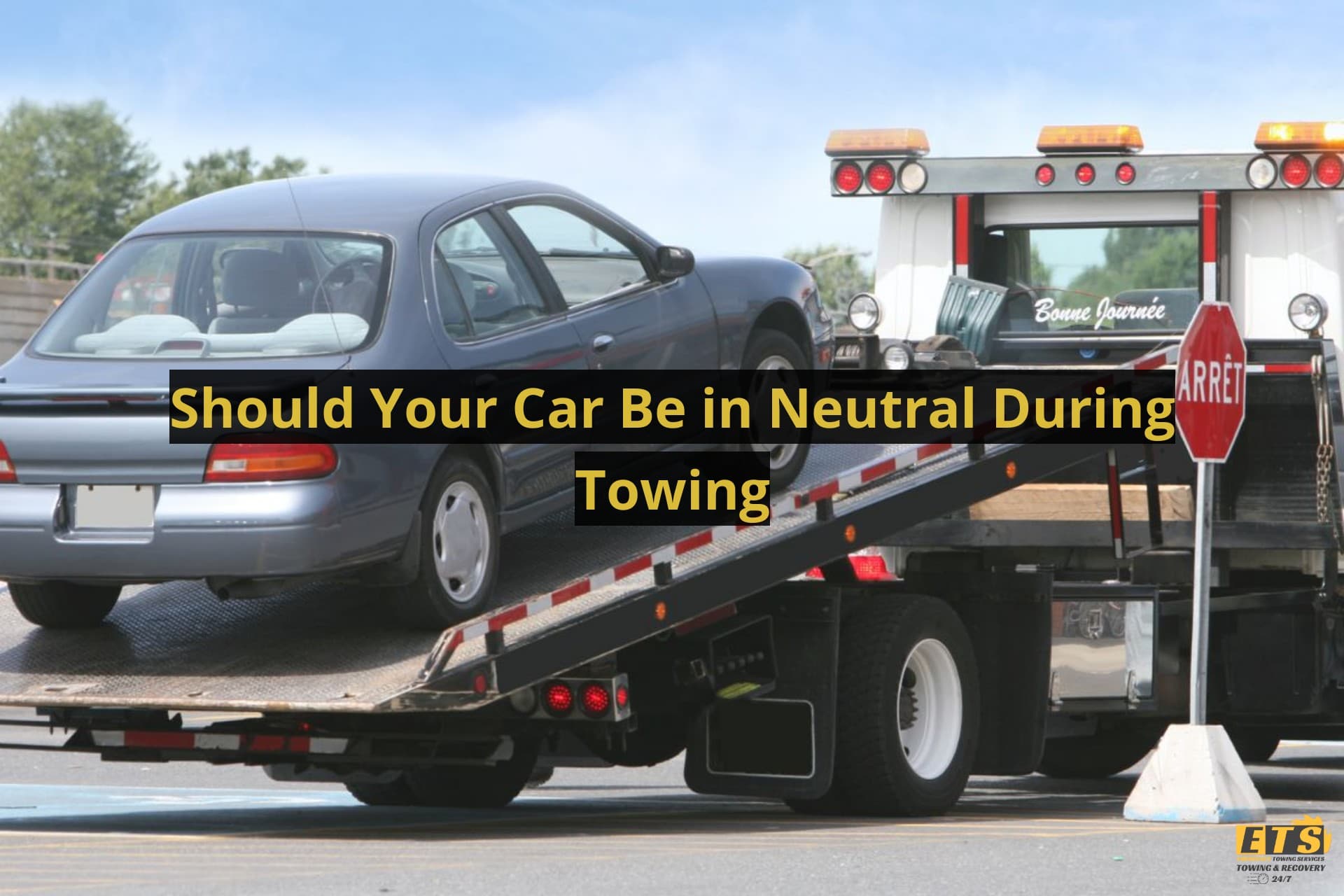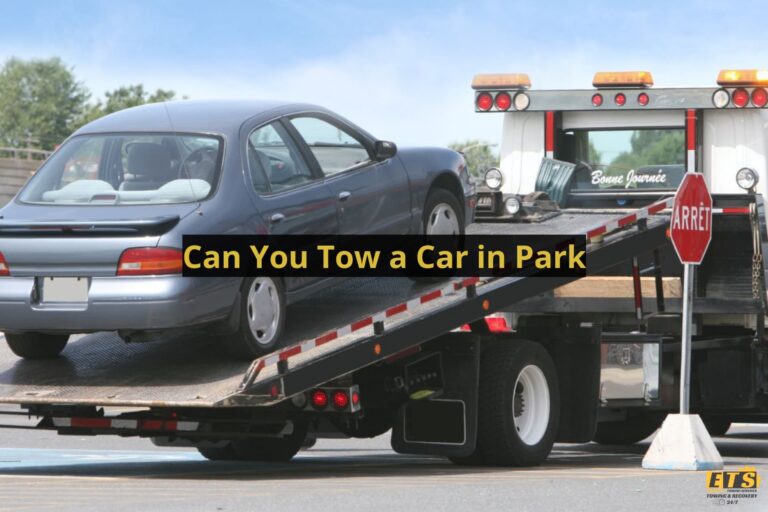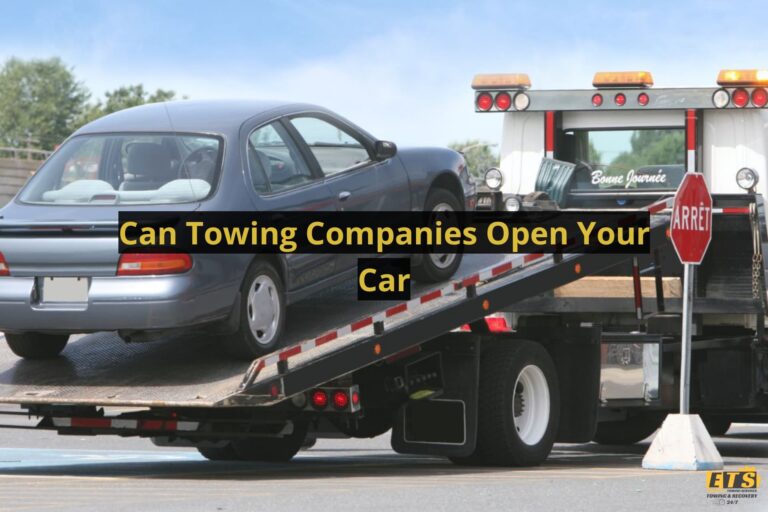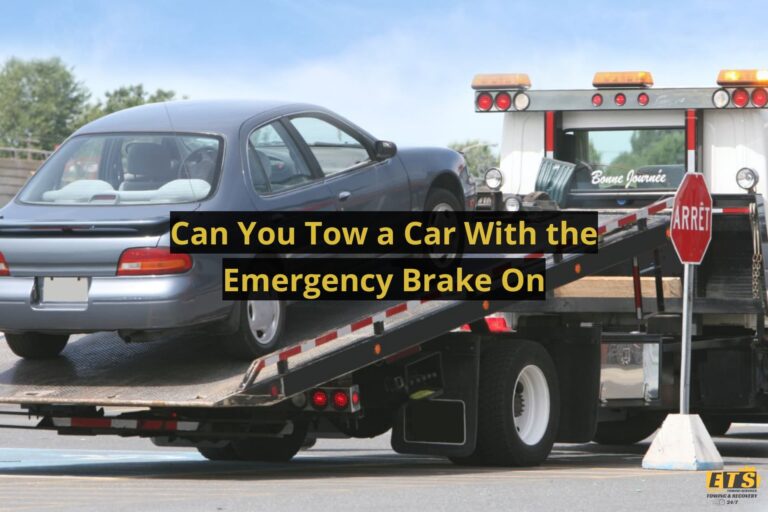Should Your Car Be In Neutral During Towing
The information presented in this article is provided for general informational purposes only, and may not reflect the current laws or legal developments. This article does not constitute legal advice, and the reader should not act on the information contained in this article without first seeking professional counsel. We make no guarantees about the accuracy, completeness, or adequacy of the information contained in this article. The reader assumes all risks and liabilities associated with any actions taken as a result of reading this article. To obtain legal advice on your specific matter, please contact a qualified legal professional.
Are you planning on towing your car? If so, one important decision you’ll have to make is whether or not to put the car in neutral. While it may seem like a simple choice, there are several factors to consider before making this decision.
Different types of towing methods require different approaches when it comes to putting your car in neutral. Additionally, there are pros and cons to each option that should be weighed carefully before making your final decision.
In this article, we will explore the various considerations you should keep in mind when deciding whether or not to put your car in neutral during towing and provide some safety tips for a successful tow.
Different Types of Towing Methods
You’ll feel much more confident and informed about the different methods of towing available to you.
Two common types of towing are flatbed towing and dolly towing. Flatbed towing involves loading your vehicle onto a flatbed tow truck, which lifts all four wheels off the ground. This method is ideal for heavy-duty vehicles or those with significant damage.
On the other hand, dolly towing involves using a trailer that attaches to the back of another vehicle. The front wheels of your car will be lifted off the ground while the rear wheels remain on the road. Dolly towing is best suited for lightweight vehicles that can’t be flatbed-towed.
Another option for towing your car safely is by having someone else do it for you. Towing with a friend’s vehicle might seem like an easy way out, but it’s important to note that this method should only be used in emergency situations or short distances within a safe speed limit.
Remember, if you’re not familiar with proper techniques and safety precautions when it comes to towing, it’s better to leave it up to professionals.
By understanding these two common types of towing methods and knowing when it’s appropriate to use each one, you’ll have peace of mind when faced with unexpected situations on the road.
Always remember that safety should always come first when choosing how to move your vehicle from one location to another.
Importance of Choosing the Right Towing Method
Picking the appropriate towing method is crucial for a smooth and safe journey. If you opt for professional towing, you can enjoy several benefits such as the expertise of trained professionals, damage-free transportation, and roadside assistance if needed.
On the other hand, if you choose to tow your vehicle yourself without proper knowledge or equipment, you may end up facing various DIY towing risks like accidents, malfunctioning equipment and damage to both vehicles.
To ensure that your car remains secure during towing, it’s important to understand the different types of towing methods available. Flatbed or rollback trucks are best suited for long distances as they provide complete support to your car throughout the journey. Meanwhile, dolly or two-wheel trailers are suitable for shorter distances as they raise only two wheels off the ground while keeping the remaining wheels on the road.
Choosing an appropriate towing method also depends on factors such as weather conditions and weight distribution of your car. So before embarking on a tow journey, make sure that you have selected a reliable service provider who offers professional quality services using right kind of equipment based on the type of vehicle being towed.
Pros of Putting Your Car in Neutral
If you’re getting your car towed, putting it in neutral can offer some benefits. By doing so, you reduce the wear and tear on your transmission.
This is because the wheels aren’t connected to the engine, which means they’re not spinning when being towed. Additionally, putting your car in neutral makes it easier for the tow truck driver to maneuver and transport your vehicle.
Reduced Wear and Tear on Transmission
By putting your vehicle in neutral while being towed, you’ll prevent excessive wear and tear on your transmission. When your car is in gear, the wheels are spinning and turning the gears inside the transmission. This generates heat and friction, which can damage internal components over time. By shifting to neutral, you disengage the gears from the engine, allowing them to spin freely without any resistance.
The benefits of reducing wear and tear on your transmission go beyond just prolonging its lifespan. It also means that you won’t have to fork out large sums of money for repairs or replacements down the line. Additionally, a well-maintained transmission can help improve fuel efficiency and overall performance of your vehicle.
However, it’s important to note that there are still risks involved when towed with a neutral gear. You should always follow proper towing procedures and consult with a professional if you’re unsure about what steps to take before towing your car in neutral mode.
Easier for the Tow Truck Driver
It’s easier for the tow truck driver to transport your vehicle when it’s in N gear, as they won’t have to deal with any jerks or jolts while journeying. This is particularly important if they’re towing the car over a long distance or on uneven roads. When your car is in neutral, the driver can easily control its speed and movement without putting too much strain on their equipment. As such, it significantly reduces the risk of accidents or damages that could occur during transit.
If you want to make things even easier for the driver who comes to tow your car, there are a few other things you can do besides putting it in neutral. These include:
- Turning off all lights and accessories in your car so that it doesn’t drain battery life during transportation.
- Making sure that your tires are inflated properly before towing so that they don’t wear down too quickly.
- Letting the driver know about any special circumstances surrounding your car (such as modifications or recent mechanical work) so that they can take extra care during transportation.
- Being available at both pickup and drop-off locations so that you can answer any questions or provide additional information if needed.
By doing these things, you’ll not only make things easier for the tow truck driver but also ensure that your car arrives safely at its destination without any issues along the way.
Cons of Putting Your Car in Neutral
Don’t make the mistake of putting your car in neutral when being towed, it could cause serious damage to your transmission. While it may seem like a logical choice to put your car in neutral during towing, there are potential damages that can occur. When you put your car in neutral, the wheels will continue to spin freely and can cause overheating of the transmission fluid.
Table: Potential Damage
| Issue | Explanation | Cost |
|---|---|---|
| Overheated Transmission Fluid | Can lead to transmission failure or costly repairs | $1,000+ |
| Misaligned Tires | Can cause uneven wear and tear on tires and suspension system | $500+ |
| Electrical System Failure | Electronic components can be damaged from power surges while being towed | $300+ |
Instead of putting your car in neutral, consider alternative methods such as using a flatbed truck or a dolly. These methods ensure that all four wheels are off the ground and eliminates any risk for potential damage. Additionally, if you have a manual transmission vehicle, you can opt for having it towed with all four wheels on the ground by using a tow bar.
Putting your car in neutral during towing may seem like an easy solution at first glance but it is important to understand the potential damages that come with this choice. There are alternative methods available that can save you from costly repairs down the line. Remember to always consult with a professional before making any decisions regarding towing your vehicle.
Considerations for Automatic vs. Manual Transmission Cars
Now that you’ve considered the cons of putting your car in neutral during towing, let’s discuss some considerations for automatic vs. manual transmission cars.
- Automatic Transmission:
- Pros: An automatic transmission car can be easily towed without any damage to the vehicle or drivetrain components.
- Cons: If an automatic transmission car is towed improperly, it can cause serious damage to the transmission.
- Manual Transmission:
- Pros: A manual transmission car can be easily towed without any damage to the vehicle.
- Cons: If a manual transmission car is not properly shifted into gear before towing, it can cause serious damage to the engine and other components.
When deciding whether to put your car in neutral during towing, you must consider the type of transmission your vehicle has. Automatic transmissions are generally safer for towing, but improper technique can cause major harm.
On the other hand, manual transmissions require more attention in terms of shifting gears before being towed, but they are less likely to sustain damage if done correctly. Ultimately, make sure you understand how best to protect your vehicle before beginning any sort of towing process.
Remember that proper techniques should always be used when towing a vehicle regardless of its transmission type. It’s essential that you follow safety guidelines and instructions provided by professionals as well as understanding what works best for your particular situation. Taking these steps will help ensure that both you and your car remain safe throughout the entire process.
Factors That Affect Whether You Should Put Your Car in Neutral
When deciding whether to put your car in neutral during towing, there are several factors to consider.
Firstly, the distance of the tow can play a role in this decision. If the distance is short and on flat terrain, leaving your car in drive may be more appropriate.
Secondly, the type of road surface you will be traveling on can also affect this decision. If you’re driving on a bumpy or uneven surface, putting your car in neutral could help prevent damage to your transmission.
Lastly, speed of towing should also be taken into consideration as this can impact how much stress is placed on your vehicle’s drivetrain.
Distance of the Tow
The distance between the two vehicles being used for towing is a critical factor to consider when deciding whether to put your car in neutral during towing. Depending on how far you’re towing, it can affect the transmission and engine of your vehicle.
Here are three things to keep in mind:
- If you’re towing uphill, it’s best to keep your car in gear. This will give your vehicle more power and prevent it from rolling back.
- If you’re towing downhill, putting your car in neutral can help reduce wear and tear on the brakes. However, if you need to slow down or stop suddenly, having the car in gear can provide additional braking power.
- For short distances (less than a mile), keeping your car in drive is usually fine as long as you don’t exceed 30 mph. But for longer distances, especially over rough terrain or at high speeds, putting the car in neutral can help protect its transmission.
Overall, the distance of the tow plays an important role in determining whether or not to put your car in neutral during towing. Consider these factors carefully before making any decisions.
Type of Road Surface
If you’re towing your vehicle, it’s crucial to pay attention to the type of road surface you’ll be traversing. Different types of surfaces can have varying impacts on your car and overall towing experience. For instance, smooth and well-paved roads may not pose much of a challenge for your vehicle, but rough or uneven surfaces could significantly impact its performance.
One of the factors that can be affected by the type of road surface is braking. When towing on slippery or wet surfaces such as ice, snow, or mud, your car may take longer to come to a stop after applying the brakes. This is because these surfaces reduce traction between the wheels and the ground, making it harder for them to grip and slow down the vehicle. Another effect of poor road conditions is increased fuel consumption due to greater resistance from friction between the tires and surface. In contrast, smooth roads with minimal obstructions offer less resistance allowing better fuel efficiency for your towed vehicle. To help illustrate this point better here’s an example table below:
| Road Surface | Effect on Braking | Impact on Fuel Efficiency |
|---|---|---|
| Wet | Longer stopping distance | Lower Fuel Efficiency |
| Gravel | Decreased Traction | Lower Fuel Efficiency |
| Paved | Better Stopping Distance | Better Fuel Efficiency |
| Rocky | Reduced Handling | Lower Fuel Efficiency |
| Snow/Ice | Poor Traction | Much Lower Fuel Efficiency |
As seen in this table above there are different effects that each type of road surface has when it comes to towing a car therefore one must consider their options carefully before making any decisions when choosing their route while they are towing their car . Factors such as distance, weather conditions, and overall weight of the vehicle being towed must also be taken into consideration in order to make the most informed decision. Ultimately, choosing the right road surface can help ensure a safe and efficient towing experience.
Speed of Towing
To keep things under control, you’ll want to watch your speed while towing. Maximum speed is essential when towing a vehicle because it can help prevent accidents and ensure that the towed car stays in place. You don’t want to be going too fast and end up causing damage to either vehicle or risk losing control of the towed car.
Safety measures should always be observed when towing a vehicle, especially regarding speed. It is important to remember that when you’re hauling another car behind yours, its weight will affect how well your brakes work and how easily you can steer your car.
To avoid any mishaps, drive at a slow pace and stay alert for any sudden changes in road conditions. Keep an eye on the traffic around you as well since other drivers may not realize that you are towing another vehicle. By driving carefully and slowly, you’ll have better control of the situation and reduce the risk of accidents happening during your journey.
Safety Precautions for Towing
Ensuring that your vehicle is in the proper gear while being towed can prevent potential safety hazards. However, there are other safety precautions you should take when towing a vehicle. Here are some important points to keep in mind:
- Check the towing weight: Before you start towing, make sure that your vehicle and the one you’re towing are well below the maximum recommended weight for your towing equipment. Overloading can cause serious accidents or damage to both vehicles.
- Use proper towing equipment: Always use the right type of hitch for your vehicle and ensure that it’s properly attached and secured. Using improper equipment or incorrect attachment methods could lead to significant damage or even accidents.
- Ensure visibility: It’s crucial to ensure adequate visibility from all angles while towing a vehicle, especially if it’s wider than your own car. Make sure all lights are functioning correctly on both vehicles, and affix appropriate warning signs and flags as necessary.
Taking these precautions will help ensure safe towing practices for both yourself and others on the roadways.
Remember, safety always comes first when operating any kind of motorized equipment!
Final Thoughts on Whether Your Car Should Be in Neutral During Towing
Now that you know the safety precautions for towing, let’s discuss the final thoughts on whether your car should be in neutral during towing. It’s a common question among those who tow their vehicles.
There are pros and cons to both leaving your car in gear or putting it in neutral. One of the safety considerations when towing a vehicle is to avoid causing any damage to its transmission. When you leave your car in gear, it can cause additional strain on the transmission since it will continue to rotate even if the engine is not running. On the other hand, putting your car in neutral allows for smoother and safer towing without causing any damage to its internal parts.
Another factor to consider is how much control you have over your vehicle while being towed. Leaving your car in gear gives you more control over steering and braking, but if something goes wrong, it could cause an accident. Putting it in neutral may take away some of that control but provides less risk of losing control altogether.
In conclusion, there are pros and cons to both leaving your car in gear or putting it into neutral during towing. Ultimately, which one you choose depends on personal preference and what works best for you based on safety considerations such as preventing damage to the transmission and maintaining proper control over your vehicle while being towed.
Final Words
So, should your car be in neutral during towing? The answer isn’t a simple yes or no. It depends on various factors such as the type of towing method, the transmission type of your car, and safety precautions.
Overall, it’s important to choose the right towing method for your specific situation and follow all necessary safety precautions. Whether you decide to put your car in neutral or not, make sure to consult with a professional and take all necessary steps to ensure a safe and successful tow.
Remember, one wrong move could result in costly damages or even endanger lives. So, be smart and careful when it comes to towing your vehicle! As they say, it’s better to be safe than sorry.







